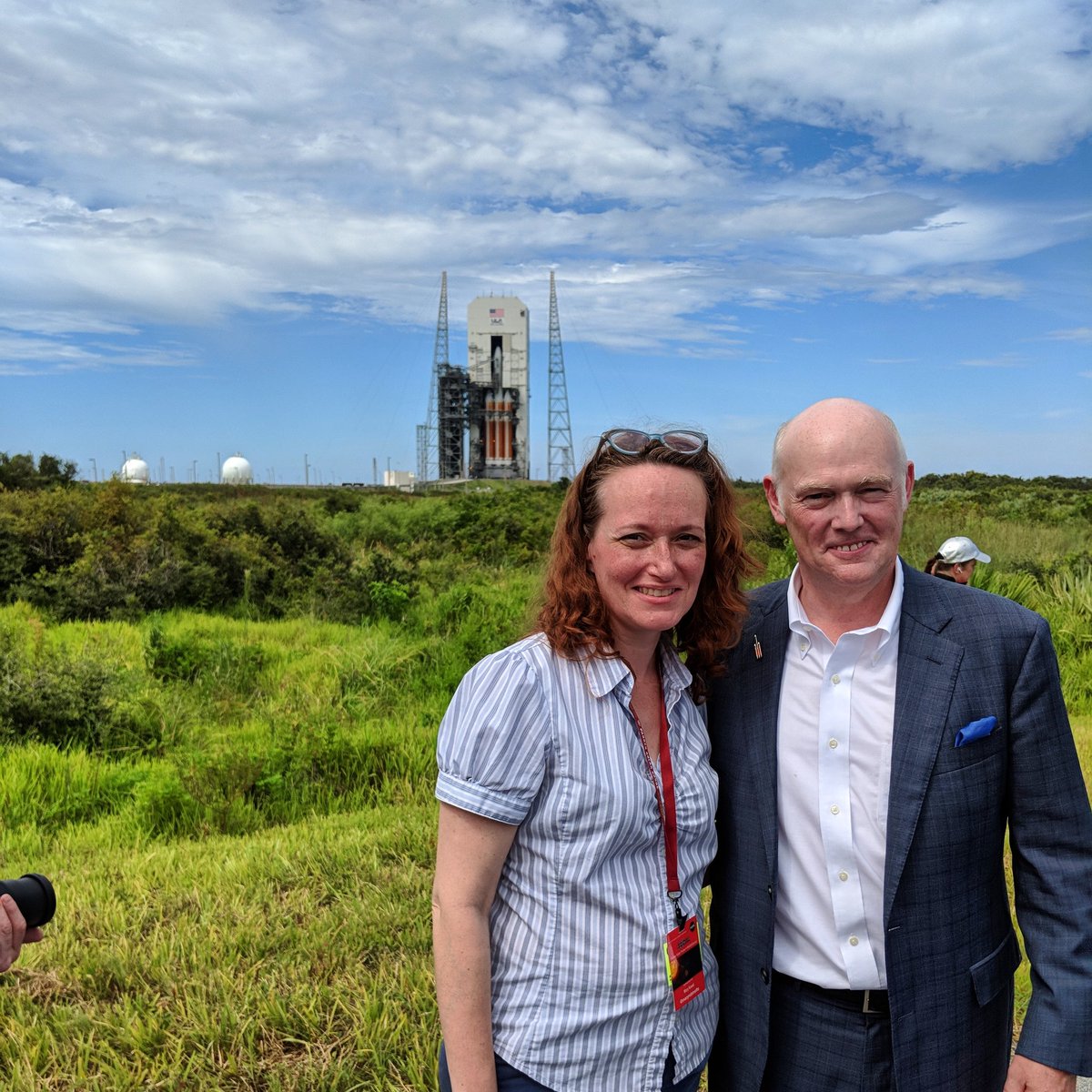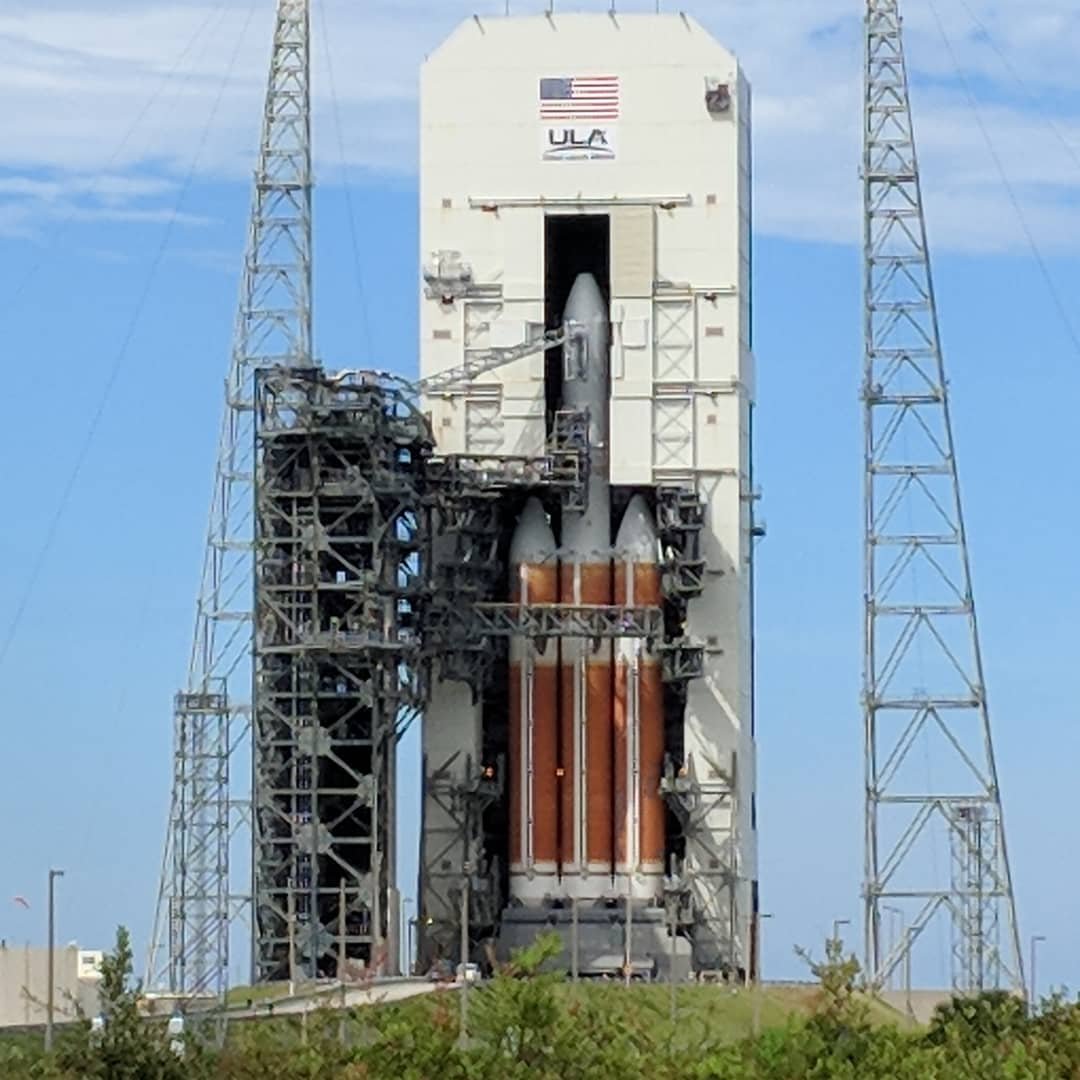Apparently buzzards used to circle the launch pads and one bounced off the nose of the orbiter. So they started setting up a BBQ station for buzzards to draw them away.
#NASAsocial
#NASAsocial
We're on site and ready for our briefing at #NASAsocial.
By which I mean that we are prepped to geek.
By which I mean that we are prepped to geek.

We're talking about heliophysics, which is a study of the sun and how it affects everything in the solar system. Space is filled with plasma so the things you have to worry about most are things like magnetic reconnection.
#NasaSocial #SolarProbe
#NasaSocial #SolarProbe
Voyager is flying through the edge of the heliosphere now, which is pretty cool. There are missions which look at auroras. Once that look at other aspects of the heliosphere.
The Parker #SolarProbe is the first mission to fly to the sun itself. #NASASocial
The Parker #SolarProbe is the first mission to fly to the sun itself. #NASASocial
Heliophysics is the glue that connects all the other NASA studies, because it fills the interplanetary space. And understanding our star will allow us to understand other stars better.
#NasaSocial #SolarProbe
#NasaSocial #SolarProbe
Curiosity driven science is valuable, but Parker #SolarProbe has applied science aspects as well.
Understanding the environment of space, and how it affects satellites and communications, has a direct connection to your cell phone.
#NasaSocial #SolarProbe
Understanding the environment of space, and how it affects satellites and communications, has a direct connection to your cell phone.
#NasaSocial #SolarProbe
A single mass coronal ejection -- an explosion on the surface of the sun -- could knock out global communication. Just *one* aspect of the Parker #solorprobe is that it will help us better understand that.
#NasaSocial
#NasaSocial
(By the way, if you have questions, I'm happy to try to fit them in and ask for you)
#NasaSocial #SolarProbe
#NasaSocial #SolarProbe
Q: Did the eclipse last year affect planning for the Parker mission?
A: No, because it was so recent that everything was pretty much set. But the citizen science was incredibly useful to heliophysics as a whole.
#NasaSocial #SolarProbe
A: No, because it was so recent that everything was pretty much set. But the citizen science was incredibly useful to heliophysics as a whole.
#NasaSocial #SolarProbe
There are several theories about why the coronosphere is hotter than the surface of the sun. The Parker probe is intended to help narrow down the answer to that.
#NasaSocial #SolarProbe
#NasaSocial #SolarProbe
Hearing from Phillipe Ruiz, the deputy lead engineer for the Parker #SolarProbe.
This mission predates NASA. Started as a goal in 1958. Challenges are the heat, yes, but how do you create a spacecraft that is autonomous, fault resistant & out of comm for weeks?
#NasaSocial
This mission predates NASA. Started as a goal in 1958. Challenges are the heat, yes, but how do you create a spacecraft that is autonomous, fault resistant & out of comm for weeks?
#NasaSocial
@threadreaderapp unroll
• • •
Missing some Tweet in this thread? You can try to
force a refresh
















